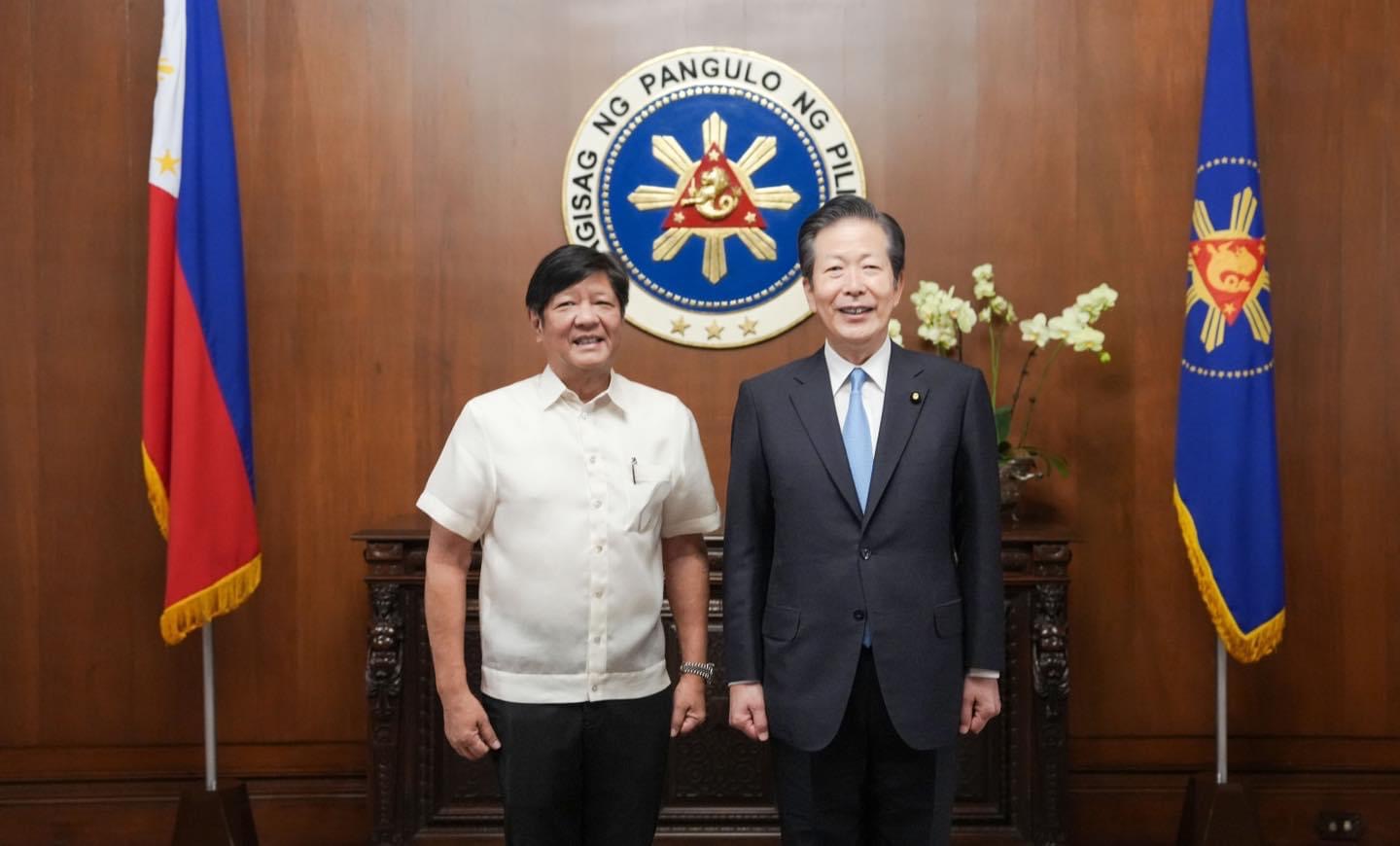Marcos, Japanese party leader eye stronger defense ties, peace in SCS
By Raymund Antonio and Raymund Antonio
President Ferdinand “Bongbong” Marcos Jr. and Japanese Komeito Party Chief Representative Yamaguchi Natsuo agreed to deepen ties in maritime security and defense as they addressed security concerns in the Southeast Asia region.
 (From left) President Ferdinand Marcos Jr. and Japanese Komeito Party Chief Rep. Yamaguchi Natsuo during a meeting in in Malacañang.
(From left) President Ferdinand Marcos Jr. and Japanese Komeito Party Chief Rep. Yamaguchi Natsuo during a meeting in in Malacañang.
While not mentioning China’s aggressive stance in the South China Sea, the Chief Executive made mention of his concerns regarding “peace and allowing the free conduct of trade and shipping” in the region where China Coast Guard (CCG) had most recently water cannoned a Philippine sea vessel.
“In the past, it could be said that the largest part of our interaction between our two countries were always in terms of trade, in terms of development, in terms of ODA (Official Development Assistance),” the President said during Natsuo’s courtesy call in Malacañang on Wednesday, Aug. 16.
“But I suppose that now times have changed and those agreements have gone beyond just trade, just business, just investment. And we now have to concern ourselves with issues of security and defense in our region,” he added.
Acknowledging Japan’s help to the Philippines in terms of security and defense, the President stressed how critical this was in preserving peace with neighboring countries in Southeast Asia.
“We must acknowledge the very important contributions that Japan has made to the Philippines in terms of not only training, not only in terms of equipment, but also in the agreements that we have been able to forge between our two countries in terms of cooperation, in terms of preserving the peace and allowing the free conduct of trade and shipping the South China Sea,” Marcos said.
Aside from maritime security issues in the region, the Chief Executive also expressed concern over North Korea’s “actuations”—missile launches and missile tests—that has put neighboring Japan on heightened alert
“We consider it a critical issue that, really, we in the region must work together very, very hard to try to alleviate the tensions, to try to make all the proponents of peace in the region be the dominant voice,” he said.
And while the Philippines and Japan have enjoyed trade ties for years, Marcos furthered the intention to strengthen partnerships in investment and development.
Natsuo welcomed the President’s pronouncements of the Philippines’ intention to deepen ties with Japan in other areas, emphasizing that the Komeito Party is open to more cooperation in defense and maritime security corporations.
“So Japan actively supports Philippines into entering the upper-middle income countries, public and private sectors, and also we would like to see many corporations not only in defense corporation, but also maritime security corporation, also agriculture areas,” he said.
The Philippines has benefited from various acquisitions and procurements of defense assets under a Transfer of Defense Equipment and Technology Agreement signed in February 2016 with Japan since the country relaxed its restrictions on foreign defense equipment and technology transfers in 2014.
Some of the equipment Manila received under the agreement were UH-1H helicopter spare parts and maintenance equipment, HADR equipment, and Air Surveillance Radar System.
The Philippines also continued receiving TC-90 maintenance support and sustainment program, as well as access to the sale of TC-90 ground support, spare parts, and maintenance equipment.
Japan also provided radar systems for the Philippine Coast Guard (PCG), which helped the country strengthen its maritime surveillance capabilities.
The PCG is also expected to receive a state-of-the-art satellite communication system from Japan, which would help monitor and obtain a better picture of the Philippines’ vast maritime jurisdiction in the hotly contested region.